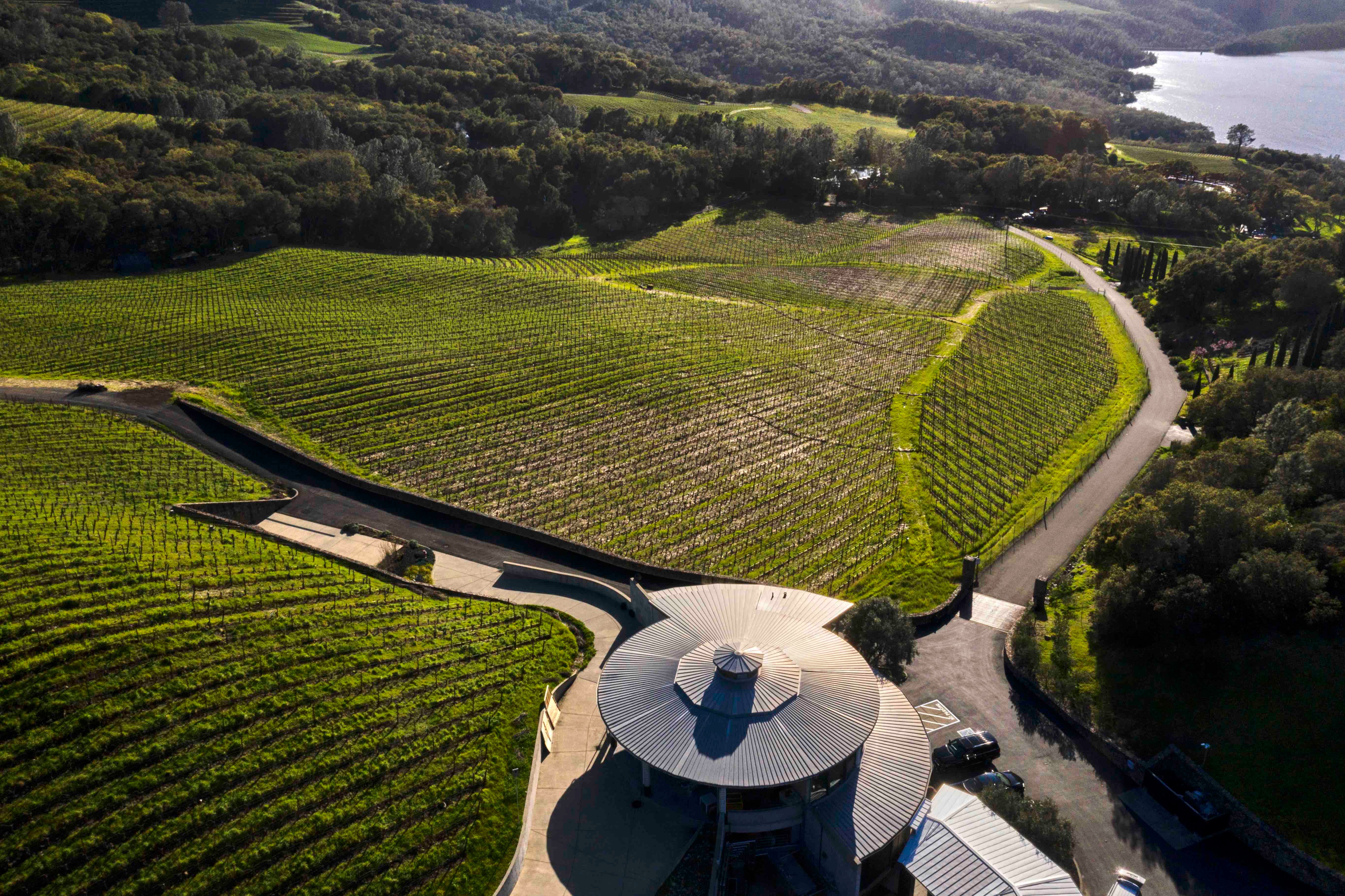Founded by entrepreneur and wine-lover Don Bryant, a passionate collector of Bordeaux wine who acquired the 40-acre Pritchard Hill vineyard overlooking Lake Hennesey in the late 1980’s, he soon realised the potential of the site, and set about planting a 13-acre parcel with 100% Cabernet Sauvignon using the most modern viticulture practices at the time.
David Abreu was enlisted to plant the vines while Helen Turley made the wines for the estate’s first decade, with the inaugural vintage release of 1992. The wines were lauded by the critics, and this fast established Bryant Family Vineyards as one of Napa Valley’s leading wineries and cemented its status as one of the top Cabernet Sauvignon producers in the US.
Today, with annual production averaging around 2,000 cases a year, chief executive, proprietor and president Bettina Bryant, a former ballerina who toured with the American Ballet Theater for seven years where legendary dancer and choreographer Mikhail Baryshnikov was artistic director, concedes: “We are tiny - almost Burgundian in nature even though the grapes we produce are Bordeaux varieties.”
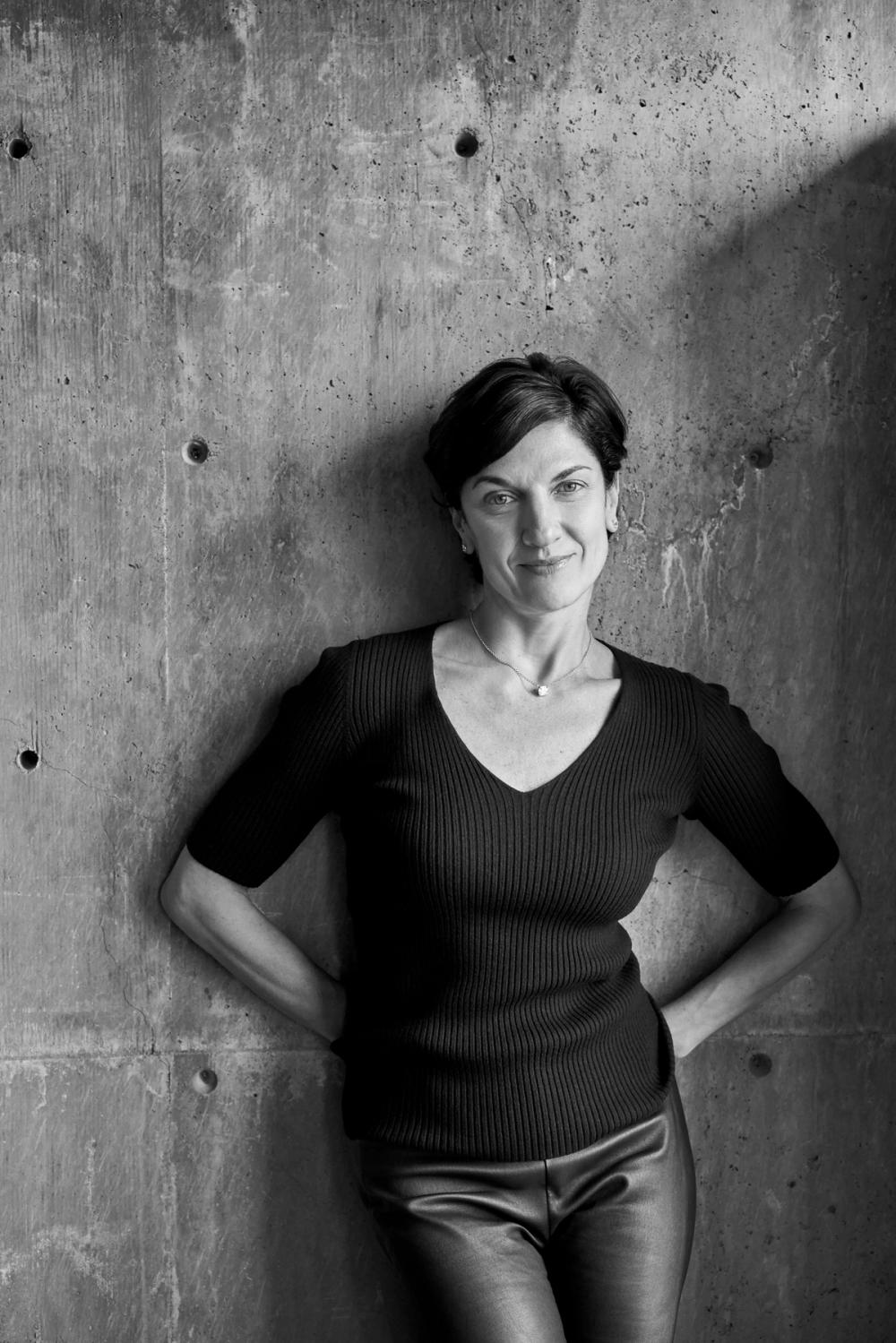
Bettina Bryant says it is focused on carefully building its export sales in key markets like the UK where it works exclusively with Pol Roger Portfolio
While Bryant could easily sell its entire production to the US domestic market, it nonetheless pursues a highly focused export strategy, to ensure its place on the world stage.
“It’s all about being on the international stage and being up there with other elite wines,” confirms Bryant. Around 80% of the winery’s production is sold DTC which she describes as “such a valuable thing to have when the pandemic hit, we were not wholly reliant on tasting rooms,” with approximately 10% being shipped internationally.
Switzerland is currently the winery’s biggest single market - “I’m Swiss so that might have something to do with it,” laughs Bryant, who was born in Nashville to Swiss parents. “I have a really great relationship with our partner over there, and these relationships are so important. It’s why I value the time we spend with Will and the Pol Roger team in the UK, and their sheer attention to detail.”
The proportion of wine shipped to the UK is “slowly edging upwards”, says Bryant, who partly attributes the large US ex-pat community for success in the UK market. “The culinary experience here in London is amazing and has changed hugely for the better. You can get absolutely astounding quality.”
As Dennison points out, the UK is still at the heart of the global fine wine trade, another reason why a cult wine would want its presence felt here.
Laser focus

Bryant has had to cope with losing much of its 2020 and 2021 vintages
With the average bottle of Bryant Estate wine retailing north of $500, the average customer has got to be pretty well-heeled, and, one would imagine, largely inured from the cost-of-living crisis affecting many in the UK. However, Bryant claims that even top-end wineries are not exempt from its impact.
“It was such a pendulum swing coming out of 2020 and 2021 after the pandemic, and we faced such strong headwinds with problems sourcing glass and capsules, for example. Couple that with scarcity, and it was a tough time.
“We lost the entire vintage in 2020 and 2021 was a miniscule yield, so we are being laser focused and strategic when it comes to exports. We have recently engaged an importer for Hong Kong and Singapore, but it’s done on a case-by-case basis."
Pol Roger Portfolio has been Bryant’s UK distributor for the past two years, prior to which the winery shipped little of its wines here. The company’s head of fine wine, Will Dennison, stresses the importance of getting the wines under the noses of potential buyers.
“It’s all about putting the wine in front of retailers and restaurants. Everyone has heard of Bryant, but they may not have actually tasted the wines for 10 – 15 years, and that’s part of our job to open the wines and help build the brand. At this top end it’s all about single vineyards, co-fermentation and really well-made structured wines.”
He adds: “The most successful Californian producers, such as Bill Harlan, are obsessed with travelling. And while Robert Mondavi was a very different proposition, he always travelled the world to get people tasting his wines.”
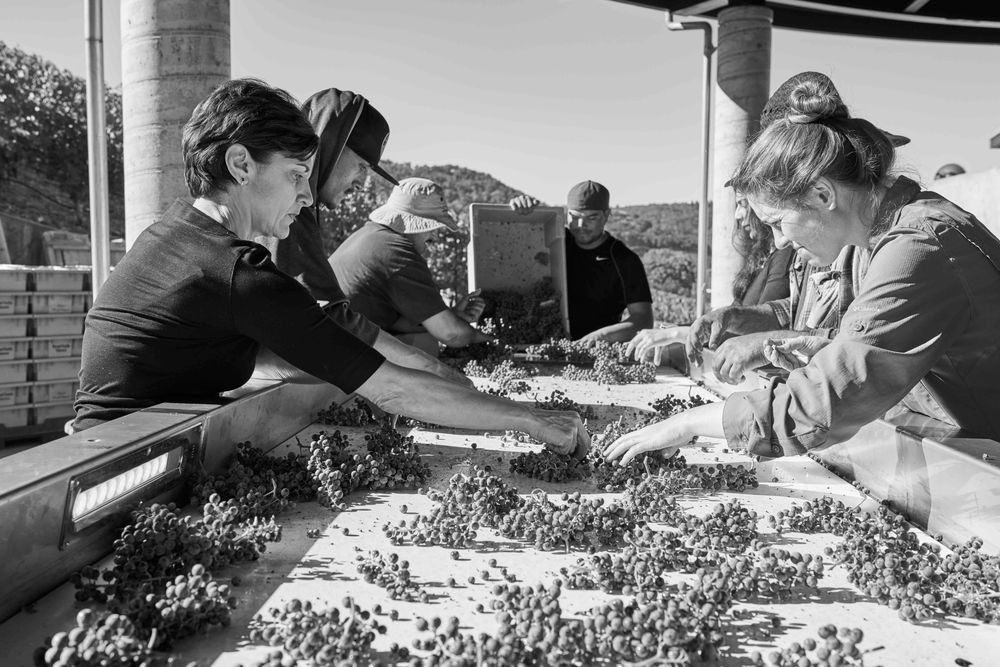
Attention to detail is key at Bryant in making its premium Napa wines
Bryant’s main customers in the UK are largely private collectors and the retail sector, as the high cost of the wines are a barrier to the on-trade, according to Dennison.
“The on-trade is always difficult because $100 FOB ends up £100 in bond, which equates to £300-£400 on a restaurant list and in the UK you can buy a 70’s or 80’s Bordeaux and a lot of old Napa for that kind of money, so it’s really hard to get those wines listed as the figures simply don’t stack up, especially as you’re talking several hundreds of dollars per bottle.”
However, he says there is still demand for the wines, and that some customers are prepared to go on a broking list and buy, for example, a 1997 Bryant.
“You name it, they can pick up old bottles here and there. We are obsessed with old wine in this country, but in the US there is more of a culture of drinking wines younger. You can drink Napa 15,16, 17 cabs and they are terrific. Of course, you can do that with Bordeaux as well, but we are also guilty of drinking Bordeaux far too old.”
For the past six years, Kathryn ”KK” Carothers has been at the helm of the winemaking operation, and she describes the excitement of seeing the wines on the table in export markets. “It’s really quite special for us to see our wines here. I’ve been travelling a lot in Europe and spending time in France and it’s great to see our wines here.”
Winemaking philosophy
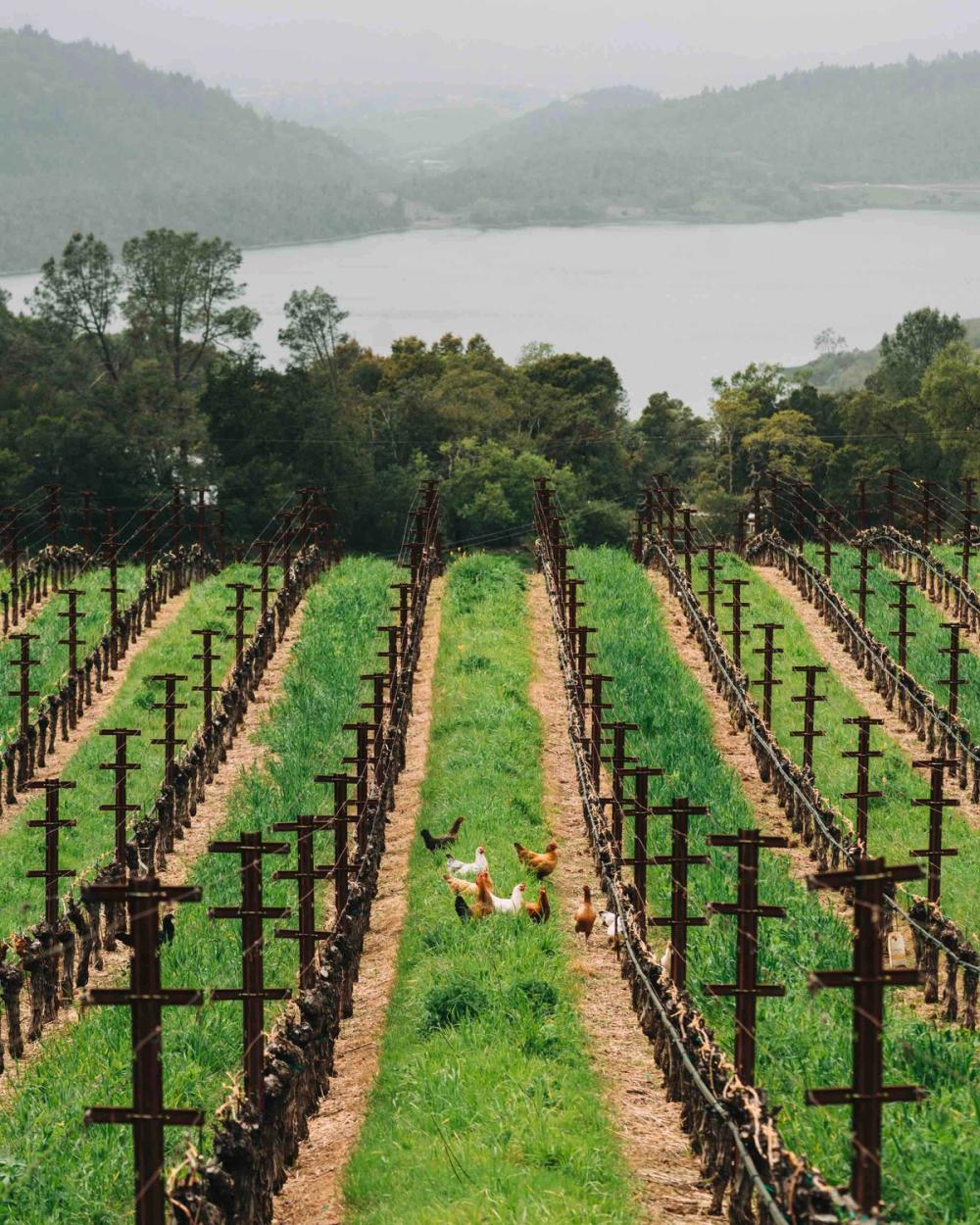
Winemaker Kathryn ”KK” Carothers says it is all about making small gains both in the vineyard and in the cellar
So what is her winemaking philosophy? “I’m so lucky to work with great fruit and great vineyards, and I think it’s all about being present and in tune,” adding that she has started to follow biodynamic winemaking principles where possible.
While it’s hard to improve on perfection, Bryant Family Vineyard’s ethos is very much about making tiny improvements in every area of the growing and production process.
“We have begun to follow the lunar calendar, as it’s proven that the moon is able to move billions of gallons of water with the tides and the effect of the moon when it’s either ascending or descending is apparent in the set flow in vines; vines bleed more or less depending on the moon. Observationally, vines bleed less during the descending phase of the moon, so we are making these little tweaks,” says Carothers.
And Bryant points out that most aspects of the production process are now done in house, from lab analysis to bottling to labelling.
“We are completely vertically integrated, and everything is done to a very high level of care that I think is largely unprecedented,” she says. “It’s a meticulous business.”
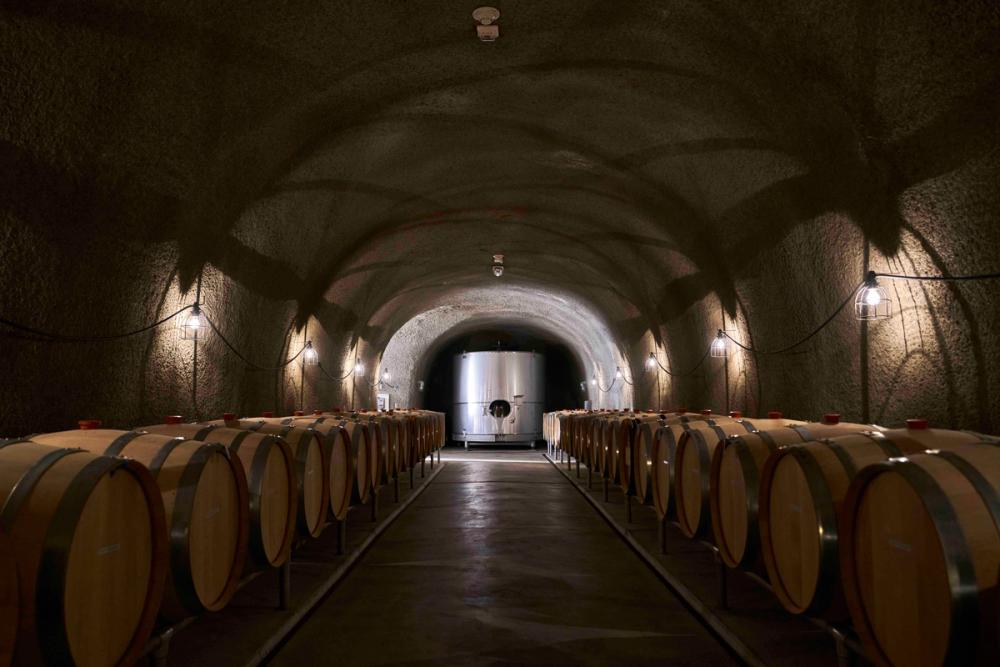
The cellars at Bryant Vineyards
Preventative steps have also been taken to protect the property from fire threats, and much work has also been done on canopy management, she adds, expressing relief that they have been spared the worst of the forest fires which strike the region with depressing regularity, devastating entire crops and wineries in their wake.
“2017 was when the first fires started to impact us, and 2020 was catastrophic for the valley, and we had to drop some of our fruit, unfortunately. I wasn’t going to take a chance, though there were some very high-end producers who stayed the course, and of course they had their reasons. But that experience really heightened my awareness of the environmental dilemma we are in; we really need to get things in balance and be good custodians of the land – it’s no joke.”
Harvest hopes
Positioned between 750 – 1,000 feet above sea level, the vineyards are close to being viticulturally perfect, facing west on the north side of Pritchard Hill, an exposed site which receives plentiful afternoon sun to warm the vines. Yields are low, with annual production of the flagship wine ranging between 300 – 1,000 cases annually.
“We are at the mercy of the gods to a certain extent, but there are steps we take to mitigate the effects of the weather,” explains Carothers. “There is a lot of preparation and work to do in the vineyard, though the Bryant site is inherently frost free because it’s on a slope so we are not impacted by frost risk, and fortunate enough to suffer from very little mildew, thanks to a drying wine from the coast to the vineyard which creates good airflow and mitigates mildew pressure.”
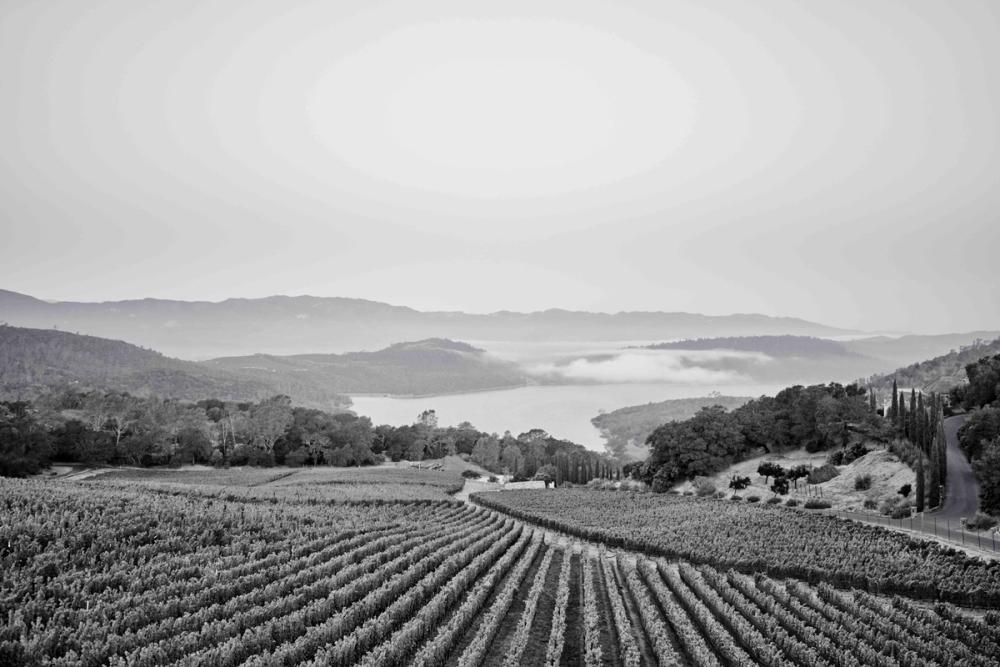
The vines are ideally located at up to 1,000 feet above sea level
Additionally, the vineyard itself is very well drained and doesn’t suffer from flooding, even in 2017 when there was a deluge of rain and other neighbouring vineyards found themselves under water.
The winery produces three red wines, a 100% Cabernet Sauvignon Bryant Family vineyard wine, which is made from grapes sourced solely from the Pritchard Hill site. The second wine in the portfolio Bordeaux Blend, the eponymous Bettina; while the third wine in the Bryant Family Vineyard stable is the DB4, made with grapes from Madrona Ranch, Thorevilos and Las Posadas, along with Bryant Estate fruit and was first released in 2009.
“I probably drink more Bettina than anyone,” jokes Bryant.
Point of difference
So what does she think makes Bryant’s wines stand out from the crowd? “Pritchard Hill is just so unique structurally, the tannins and the longevity of these wines make them stand out,” she claims. “We really respect the variation in our wines from year to year – we are not trying to push a homogenous experience; we want to really highlight what nature has presented us with. The soils in Napa are far more complex than you’d find in Bordeaux or Burgundy, and as a result our wines are sophisticated, nuanced and expressive.”
Dennison concurs, pointing out that while there is a lingering perception that Californian Napa Valley wines are brash, bold alcohol bombs, Bryant wines, along with other top-notch producers, are bucking that trend. “Napa winemakers are putting on the brakes – Harlan, for example, have gone from making a super-octane wine, and really dialed things down, and dialed down the alcohol. These wines are now in a really cool place. People are realising that they can’t keep making such heavy wines as palates are changing. There has been a huge stylistic shift as people are preferring more subtle, elegant and restrained wines.
“These more elegant and structured wines are a far cry from those blended Valley wines with lashings of oak and residual sugar and alcohol, made the same way year in and year out.”
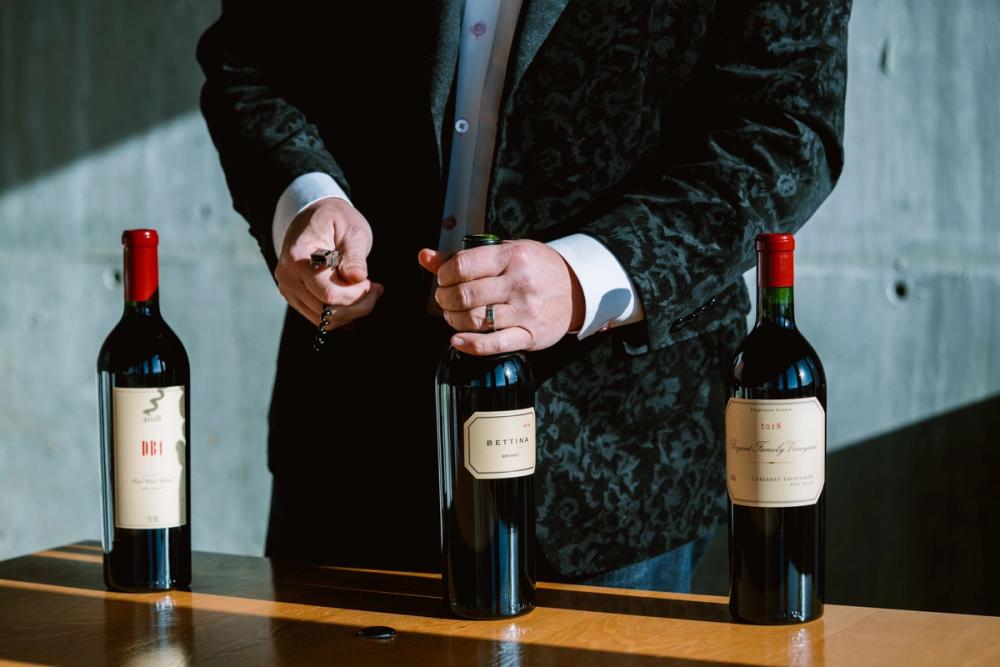
Bryant is working hard to be one of Napa's most sought after premium wines
Not one to rest on its laurels, the winery has recently been experimenting with its first white wine, a Chardonnay. “We wanted to add that to our offering, and we had a lot of blind international tastings and lots of discussions,” says KK. “We called it the Chardonnay quest, and started in late 2018 – asking ourselves, what would it meant to make a white wine?
Fortunately, Carothers and Bryant have closely aligned palates, both expressing a love of white Burgundies.
“So, it was a question of this is California, not quite Burgundy, it’s not the same terroir. We make Bordeaux style wines and Napa is one of the best sites in the world for that. We found a site on Sonoma Mountain, it’s quite cold there and gets the morning sun. We didn’t want something that was predictable, we wanted something unique and untapped,” says Bryant.
The result was the Bryant Estate Chardonnay, with the first vintage being released in 2021. “I’m thrilled with it,” adds Bryant. With only 280 bottles being produced in the last vintage, it’s unlikely to be making its way to the UK any time soon, but she hints that a handful of bottles might make their way to some very lucky buyers.
A passionate supporter of the arts, Bryant, who majored in art history at Columbia university after the end of her ballet career, has always been keen to incorporate the worlds of art and wine, and has collaborated with artists to create some one-off labels.
In 2016, for example, Bryant collaborated with friend and artist Ed Ruscha, who created some bespoke artwork for a Cabernet Franc, in which the artist engraved the label and designed a presentation box with embossed paper, which was a rendering of the vineyard botanicals, which Bryant was “delighted with”, which led to a similar collaboration to celebrate the tenth anniversary of the Bettina in 2019.
“Our customers loved it, and because there is so much disposability in this business, I wanted to create something with longevity that people would regard as an art object to appreciate.”
Which very much sums up Bryant Family Vineyards’ approach to winemaking and putting its mark on the great Napa winemaking scene.
* You can find out more about Family Family Vineyards at its website here.
* Pol Roger Portfolio is a commercial partner to The Buyer. You can find out more about what it offers its customers here.
